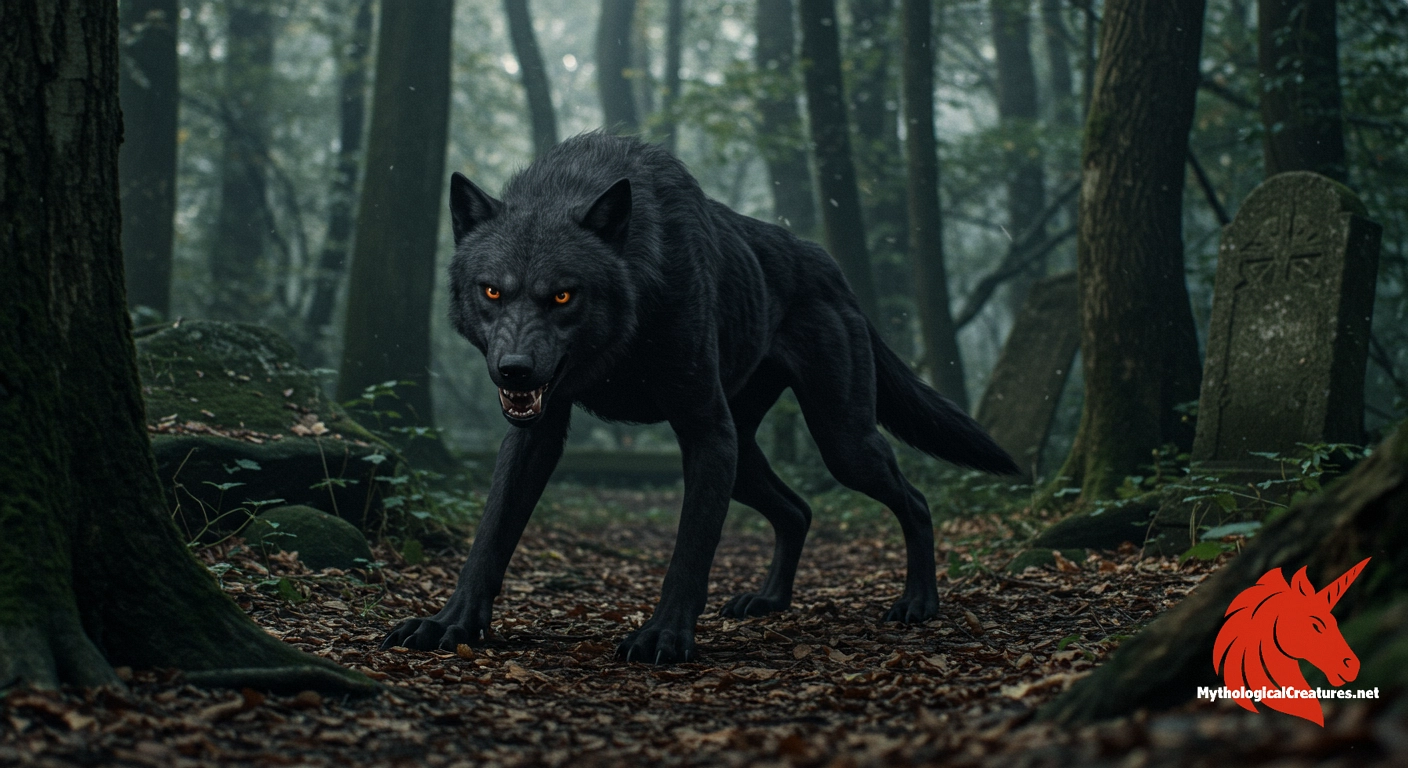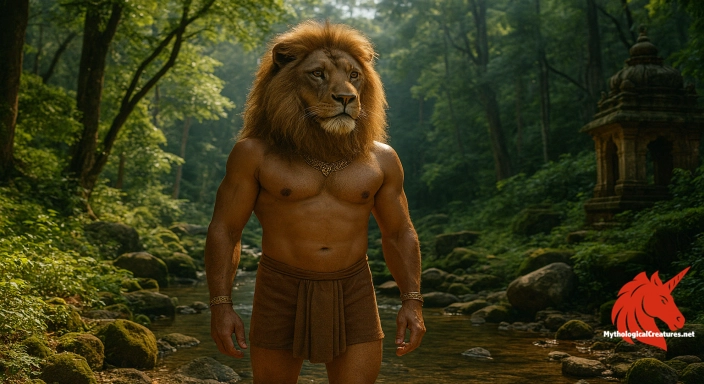Pricolici: Pricolici are Romanian mythological beings that embody a blend of vampire and werewolf characteristics.

Pricolici
Pricolici - Pricolici embody the transformation of violent humans into relentless nocturnal predators, serving as a cautionary symbol against moral decay.
Origins & First Encounters
Pricolici are enigmatic beings deeply rooted in Romanian folklore, intertwining the ominous traits of vampires with the savage ferocity of werewolves. Their origins are steeped in rural tradition, emerging from regions where superstitions and natural mysteries combined to form cautionary tales. Early accounts insinuate that these creatures were born from a cursed transformation—a child, breastfed beyond the natural weaning period, doomed to inhabit a dual existence. Local legends depict them as the revenants of violent men who, even in death, continue to live out their brutish tendencies. The myth of the pricolici reflects the cultural anxieties surrounding the loss of humanity and the encroachment of wild, untamed forces. This creature has historically served as a grim reminder of the perils of moral decay and uncontrolled aggression. Its story occupies a unique space in the tapestry of Romanian myth, where the boundary between human and beast becomes blurred in the shadow of supernatural influence. Enduring through centuries of oral and written traditions, the pricolici remains a striking symbol of nature’s dark, ineffable mysteries. Embedded in the collective cultural memory, these beings continue to fascinate and terrify, capturing the essence of primordial fear and the allure of the forbidden.
Source Texts & Tale Variants
Folkloric documentation of the pricolici is found in a diverse range of manuscripts, oral narratives, and later collections of Romanian myth. Early scribes and folk historians recorded variants of their tale, ensuring that the creature’s dualistic nature—part vampire and part werewolf—was preserved for future generations. Numerous narrative strands exist, some emphasising the pricolici’s remorseless transformation from human to beast, while others highlight its inevitable descent into nocturnal terror. In one version of the story, the creature is depicted solely as a wolf-like apparition, whereas other accounts recount instances of it assuming human guise to deceive its prey. Oral traditions, passed down through family lines, add further layers of complexity and regional nuance to the legend. These stories often serve as allegorical warnings, illustrating the consequences of moral and social transgressions. The variant narratives have evolved over time, adapting to the local cultural context and reflecting the fears of different communities. This multiplicity of sources, though sometimes contradictory, enriches the lore surrounding the pricolici and ensures its continued relevance in folklore. The blend of documented folklore and evolving oral tradition sustains a dynamic mythos that captivates the imagination.
Form & Powers
Pricolici are invariably portrayed with strikingly lupine features that blur the lines between human and beast. In their animal form, they possess a robust, wolf-like physique, complete with a powerful build that exudes wild strength and agility. Their eyes are often depicted as glowing with an eerie luminescence, suggesting a predatory instinct that is both intelligent and relentless. Folkloric descriptions highlight a spectral fur that shimmers under moonlight, lending them an almost otherworldly appearance. Typical accounts note elongated snouts equipped with sharp, piercing fangs, premium for inflicting lethal bites on unsuspecting victims. Even when assuming human form, subtle signs—a slight exaggeration in the contours of the face or a certain feral intensity—betray their true nature. Some legends even describe a cold, deathly pallor to their skin and a presence that radiates an undeniable aura of otherness. Variations in size and build occur across different tales, yet the unmistakable motif of wolf-like anatomy remains central. This amalgam of features not only instils fear but also symbolises the constant struggle between humanity’s civilised self and its untamed, animalistic instincts.
Regional Faces
Regional interpretations of the pricolici reveal a fascinating spectrum of characteristics that vary across different parts of Romania. In the Carpathian regions, local lore places strong emphasis on the creature’s connection with the nocturnal wilderness, casting it as both a harbinger of doom and a guardian of the untamed forest. Communities from the highlands recount the pricolici as a distinctly wild, wolf-like entity, unwavering in its animalistic nature. Conversely, tales from lower plains and more urbanised areas sometimes present subtle shifts, where the creature can seamlessly blend into human society while retaining an undercurrent of menace. Some regions also draw a comparison between the pricolici and other local supernatural entities such as the vârcolac, though the pricolici consistently maintain their lupine form across these narratives. Folklore from various localities often adapts the creature’s story to reflect societal fears, be it the threat from nature or the internal corrosion of ethical values. In each regional account, specific rituals, talismans, or local customs emerge as countermeasures against the pricolici’s influence. The enduring local adaptations and regional nuances underscore how culturally specific environments shape the myth, reinforcing its role in both explaining and challenging the limits of natural order.
Cultural Parallels
The pricolici share notable similarities with a range of mythological entities found throughout Eastern Europe and beyond, creating a rich tapestry that links disparate cultural folklore. Their ability to shift between forms echoes the broader werewolf myth prevalent in many parts of Europe, where the dual nature of man and beast reflects universal human fears. While strigoi often emerge as shapeshifting undead, pricolici are consistently tied to the wolf archetype, highlighting a distinct animalistic thread in their narrative. This overlap in characteristics is particularly evident when comparing them to the vârcolac, another infamous creature whose lore intertwines bloodlust with lunar mystique. Such cross-cultural parallels extend into Western legends of the wolf-man, where the tension between civilisation and the wild is a constant theme. The pricolici’s dual identity also invites comparisons with tales of cursed souls and revenants found in various mythic traditions, where the fears of eternal damnation and uncontrolled ferocity converge. By juxtaposing these myths, one can appreciate how societies use similar motifs to address existential anxieties and the inherent unpredictability of life. This comparative view not only enriches our understanding of the pricolici but also underlines the shared narrative techniques employed by different cultures to explore humanity’s darker aspects. Ultimately, the pricolici stands out as a multifaceted symbol, encapsulating the universal struggle between order and chaos.
Legacy & Modern Evolution
Over the centuries, the depiction of pricolici has evolved, mirroring shifts in societal attitudes and the broader dynamics of mythmaking. Originally embedded within the grim context of rural cautionary tales, the pricolici was once a clear personification of raw, untamed violence manifesting after death. As modernity encroached upon traditional lifestyles, the myth adapted, incorporating elements of contemporary horror and psychological depth. Today, the creature appears in literature, cinema, and even video games, where its image is reinterpreted to resonate with modern audiences while retaining its ancient roots. The notion that violent or otherwise malevolent individuals return as pricolici has been transformed into a broader metaphor for unrepentant human failings and the persistence of past sins. Evolving social perspectives have allowed for a reimagining of the pricolici—sometimes even portraying it as a tragic figure ensnared by fate rather than a mere monster. Despite this modern reinterpretation, traditional accounts of nocturnal attacks and unexplained phenomena continue to surface in rural communities, suggesting that the legend still possesses a potent hold on the cultural psyche. The dynamic evolution of its image reflects an ongoing dialogue between the past and the present, illustrating how folklore can adapt while continuing to illuminate the darker corners of human nature. In all its incarnations, the pricolici remains a powerful symbol of the eternal tension between civilisation and the raw forces of nature.
Interesting Fact
An intriguing aspect of the pricolici myth is its blurring of the boundary between human and beast, reflecting deep-seated cultural fears of what lies beneath civilized behaviour.
Quick Creature Info
Associations:
Our Mythic Legendary Rating:

Habitat:
Supernatural Powers:
Physical Attributes:
Abilities:
Behavior:
Weaknesses:
Lore:
Related Creatures, Tales or Lore
- SStrigoi
- VVârcolac
- LLoup-garou
References
Discover Another Mythical Legend You May Not Have Heard Of?
Uncover the mysteries of ancient folklore and expand your knowledge of legendary beings from cultures around the world.
Dare to Meet the Kimpurushas....
Mythical Disclaimer: The images and data on this site are derived from various historical and literary sources, but we have found that many myths often have multiple versions and interpretations across references, sometimes contradictory. As a result, these creature depictions are artistic interpretations—imaginative blends of folklore, legend, and a dash of AI guesswork. Because creature descriptions vary widely, our illustrations and accompanying information represent our best effort to honor mythology while bridging creative gaps. Enjoy these interpretations—just remember, we've done our best to respect the stories and validate available data, but in the realm of mythology, details often shift, imagination leads the way, and nothing is ever set in stone!
Curated by the Mythological Creatures Team (rev. May 2025)
